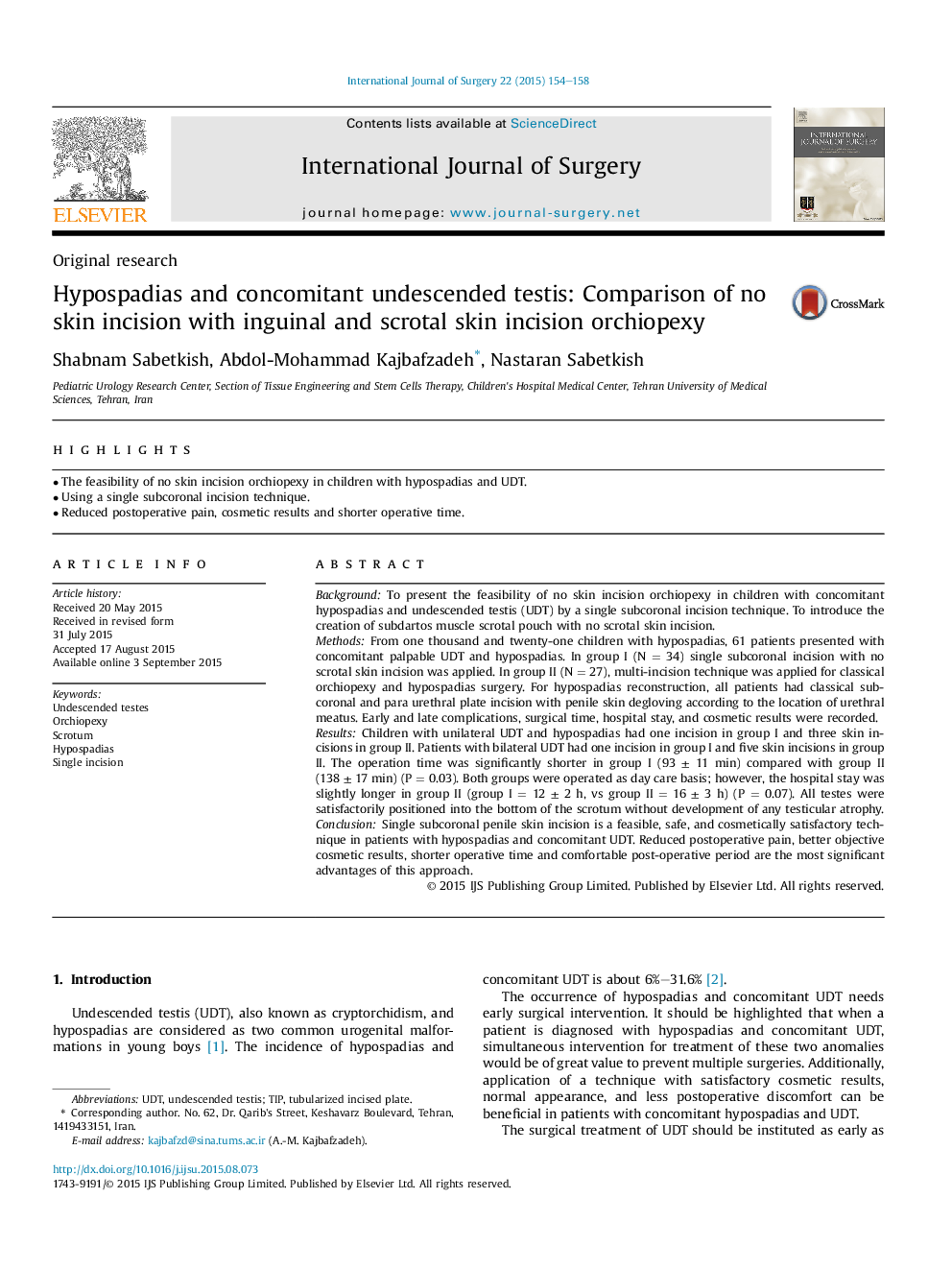| Article ID | Journal | Published Year | Pages | File Type |
|---|---|---|---|---|
| 6251433 | International Journal of Surgery | 2015 | 5 Pages |
â¢The feasibility of no skin incision orchiopexy in children with hypospadias and UDT.â¢Using a single subcoronal incision technique.â¢Reduced postoperative pain, cosmetic results and shorter operative time.
BackgroundTo present the feasibility of no skin incision orchiopexy in children with concomitant hypospadias and undescended testis (UDT) by a single subcoronal incision technique. To introduce the creation of subdartos muscle scrotal pouch with no scrotal skin incision.MethodsFrom one thousand and twenty-one children with hypospadias, 61 patients presented with concomitant palpable UDT and hypospadias. In group I (N = 34) single subcoronal incision with no scrotal skin incision was applied. In group II (N = 27), multi-incision technique was applied for classical orchiopexy and hypospadias surgery. For hypospadias reconstruction, all patients had classical subcoronal and para urethral plate incision with penile skin degloving according to the location of urethral meatus. Early and late complications, surgical time, hospital stay, and cosmetic results were recorded.ResultsChildren with unilateral UDT and hypospadias had one incision in group I and three skin incisions in group II. Patients with bilateral UDT had one incision in group I and five skin incisions in group II. The operation time was significantly shorter in group I (93 ± 11 min) compared with group II (138 ± 17 min) (P = 0.03). Both groups were operated as day care basis; however, the hospital stay was slightly longer in group II (group I = 12 ± 2 h, vs group II = 16 ± 3 h) (P = 0.07). All testes were satisfactorily positioned into the bottom of the scrotum without development of any testicular atrophy.ConclusionSingle subcoronal penile skin incision is a feasible, safe, and cosmetically satisfactory technique in patients with hypospadias and concomitant UDT. Reduced postoperative pain, better objective cosmetic results, shorter operative time and comfortable post-operative period are the most significant advantages of this approach.
